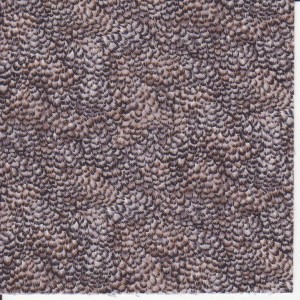Jul
3
Chicken Feathers Can Store Lots of Hydrogen
July 3, 2009 | 6 Comments
Carbonized chicken feather fibers can hold vast amounts of hydrogen according to Richard P. Wool, Ph.D., professor of chemical engineering and director of the Affordable Composites from Renewable Resources program at the University of Delaware in Newark.
Chicken feather fibers are mostly made of keratin, a natural protein that forms strong, hollow tubes. When heated, the protein creates cross links, which strengthen its structure, and it also becomes more porous, increasing its surface area. The result is carbonized chicken feather fibers, which can absorb as much or perhaps more hydrogen than carbon nanotubes or metal hydrides, two other materials being studied for their hydrogen storage potential, Wool says. Plus, they’re dirt-cheap.
The project goal is to develop new low cost hydrogen storage substrates from the waste material chicken feathers (some 6 billion lbs/yr in U.S. alone). The results show that carbonized chicken feathers have the potential to meet the DOE requirements for H2 storage of 81 grams H2 per L in 2015 and are competitive with carbon nanotubes and metal hydrides at a tiny fraction of the cost. When keratin based chicken feathers are heat treated by a controlled pyrolysis process, hollow carbon microtubes are formed with nanoporous walls. Their specific surface area increases up to 450 m2/g by the formation of fractals and micropores thus enabling more hydrogen adsorption than the raw, untreated feather fibers.
Wool estimates that it would take a 75-gallon tank to go 300 miles in a car using carbonized chicken feather fibers to store hydrogen. He says his team is working to improve that range.
The research was presented by Erman Senoz, a graduate student in the Department of Chemical Engineering at the 13th Annual Green Chemistry & Engineering Conference, could eventually help overcome some of the hurdles to using hydrogen fuel in cars, trucks and other machinery.
Wool says, “Carbonized chicken feather fibers have the potential to dramatically improve upon existing methods of hydrogen storage and perhaps pave the way for the practical development of a truly hydrogen-based energy economy,”
A nirvana moment for the pure hydrogen fuel crowd. A natural product to store the smallest atom in a molecule form. Hydrogen, the most common element in the universe, has long been touted as a clean and abundant energy alternative to fossil fuels. But its physical characteristics make it very difficult to store and transport. When warm to a pressurized gas it takes up about 40 times as much space as gasoline; as a liquid it needs to be kept at extremely low temperatures. Problematic stuff.
Wool says, “The problem with hydrogen as a gas or liquid is its density is too low. Using currently available technology, if you had a 20-gallon tank and filled it with hydrogen at typical room temperature and pressure, you could drive about a mile. When we started we didn’t know how well carbonized chicken feathers would work for hydrogen storage, but we certainly suspected we could do a lot better than that.”
According to Wool using carbonized chicken feathers would only add about $200 to the price of a car. By comparison, making a 20-gallon hydrogen fuel tank that uses carbon nanotubes could cost $5.5 million; one that uses metal hydrides could cost up to $30,000. That perspective really makes the carbonized feather fiber attractive.
This kind of innovative investigation and development, making connections that seem to begin with the utterly silly could have major impact eventually helping overcome some of the hurdles to using hydrogen as a fuel in cars, trucks and other machinery. Knowing your organic chemistry might have a major payoff someday.
Comments
6 Comments so far



Sounds like the kind of solution that Thomas Edison would come up with.
This sounds like a great idea but I`d like to see what it could do storing methane (natural gas). I think it might actually be practical. Hydrogen resists being stored.
Ditto.. Can these fibers absorb natural gas better too.. and methane. Natural gas does have a H2 component . In fact if you heat up the brew you kill off the methane producing bacteria and the h2 producing bacteria survives.
Would pipes filled with this fibre both store and deliver H2.
That’s what I want to know. More specifically would PVC pipes handle this low pressure H2 storage and release. I would also like to know the expected charging cycles lifetime. Lastly how do you store hydrogen from electrolysis at normal sea level atmospheric pressure and then release the gas to say a converted gas carburetor sans o2 sensor?
Dr. Wool,
Do you believe carbonized chicken feathers can hold and release low temperature heat? The solar space heating sector needs a cost-effective short-term storage medium for night space heating. If feather can hold hydrogen can they also hold warm air between 70-150 degree F and equally as important release it with lower temperature air being introduced via a fan?